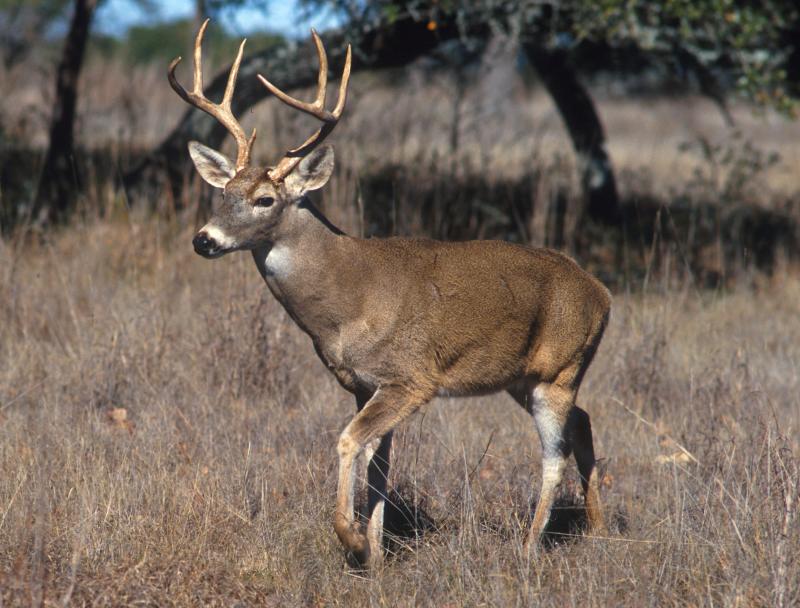Bits and pieces about 21st century deer hunting in Sussex
A letter writer expressed concerns during the January shotgun deer season about hunters firing near her home in a development beside farm fields. The law specifies that hunters cannot shoot within 100 yards of a dwelling. Her concern was a recent change in Delaware law that allows hunters to use pistol-caliber rifles as well as shotguns during the shotgun season. She didn’t like the idea of a stray bullet or slug from a rifle or shotgun endangering her family. She noted that “congested neighborhoods now exist side-by-side rural farm fields . . . .”
Of course she’s correct, and it will be surprising if more of these concerns aren’t heard in the years ahead as Sussex continues to develop. Whether it’s shotguns with slugs, pistol-caliber rifles firing bullets, or muzzle loading rifles also firing bullets, all have the capability of hitting targets at distances greater than 100 yards, particularly the muzzle loaders.
Larger caliber rifles, and their much longer effective range, have been outlawed for decades on the Delmarva Peninsula because of the flat terrain. It’s different in more rolling terrain where natural topography stops most bullets from traveling unnecessarily long distances.
Most of it comes down to hunters taking responsible shots that don’t endanger other humans. Irresponsible hunters not only endanger others, they also give the great majority of responsible hunters a bad name.
Irresponsible behavior showed itself in a concern expressed to us by another reader who told of an acquaintance walking on Thompson Island at the head of Rehoboth Bay. The land is state-owned and part of the parks system. The acquaintance came across several deer carcasses that had been shot and left, presumably after choices cuts of meat had been removed from the deer.
Natural Resources Park Rangers were advised of the deer. “An investigation into the deer having been left there led rangers to three men who had been hunting legally in the park, and who each had harvested deer that day,” said a state spokesman. “Warrants were issued to all three men, charging them with ‘Illegal disposal of solid waste on Division of Parks & Recreation lands.’ All three men pleaded guilty at JP Court #3 in Georgetown and were fined $107 each, including court costs.”
In another instance involving a deer, a citizen reported an injured buck, also on Thompson Island. “DNREC Natural Resources Police Park Rangers were alerted to an injured deer on Thompson Island by two hunters who were legally scouting a spot to participate the next day in one of the Division of Parks & Recreation’s managed deer hunts,” said the spokesman. “Park rangers quickly located the deer (which possibly had been struck by a vehicle) and euthanized it.”
Drew Aydelotte, chief of the state’s Division of Fish and Wildlife enforcement division, relies heavily on citizens who keep an eye on wildlife and potentially illegal hunting activity.
He said the state has been slowly adding officers to the wildlife enforcement ranks. “We have 25 officers for the entire state,” said Aydelotte, “and we will be adding two more officers in 2019.”
He also said his unit acquired three drones for deployment in mid-January for use in surveillance and, more importantly, to help with search and rescue missions.
About 50 percent of all investigations, he said, begin with calls from residents, while the other 50 percent originate from proactive investigations by officers patrolling different areas during different seasons. Aydelott said during this year’s hunting seasons, which spanned the fall of 2018 into the winter of 2019, there was an uptick in people calling in with concerns. Most of those calls go into an anonymous tip line at 1-800-292-3030.
“It could be that we have more people in the state all the time, or it could be the fact that we’ve upped our reporting game with an app and texting ability so people can contact us,” said Aydelotte.
In terms of irresponsibility, Aydelotte said officers saw a definite spike during this year’s deer seasons involving outlaws using powerful lights to spot deer in fields after legal hunting hours and then shooting them illegally.
Where big bucks go
An article in the 2018-19 official Delaware Hunting and Trapping publication shared results of a four-year research project that involved trapping, sedating, blindfolding and then attaching monitors to deer to track their movements. Researchers trapped 72 1- and 2-year-old yearling bucks, and 33 adult bucks that were three years or older.
The study determined that 60 percent of the young bucks lived to see their second birthday. Of those that were killed, 80 percent were harvested while the rest either died from collisions with cars or from natural causes like disease.
The biggest predictor of survivability for yearling bucks was whether they used public land during the hunting season. “For bucks that never set foot on public land, three out of four survived into the spring, whereas only one out of four bucks that used public land survived. Yearling survival rates around 70 percent on private land is comparable to some of the best managed areas of the country; however survival rates below 30 percent on public land result in a younger age structure on those areas.”
Finally, the tracking study showed older bucks generally stayed away from edge habitat - sometimes called ecotones, where fields and forests meet - and showed a preference for forested wetlands. “Either way” wrote the researchers, “for a better chance at seeing or harvesting an older-age buck, hunters may want to consider leaving the field edges and heading deeper into the woods.”
For the past several years, Delaware deer hunters have annually killed more than 14,000 deer.
Over half of them are bucks and over half of them are taken in Sussex County.






















































